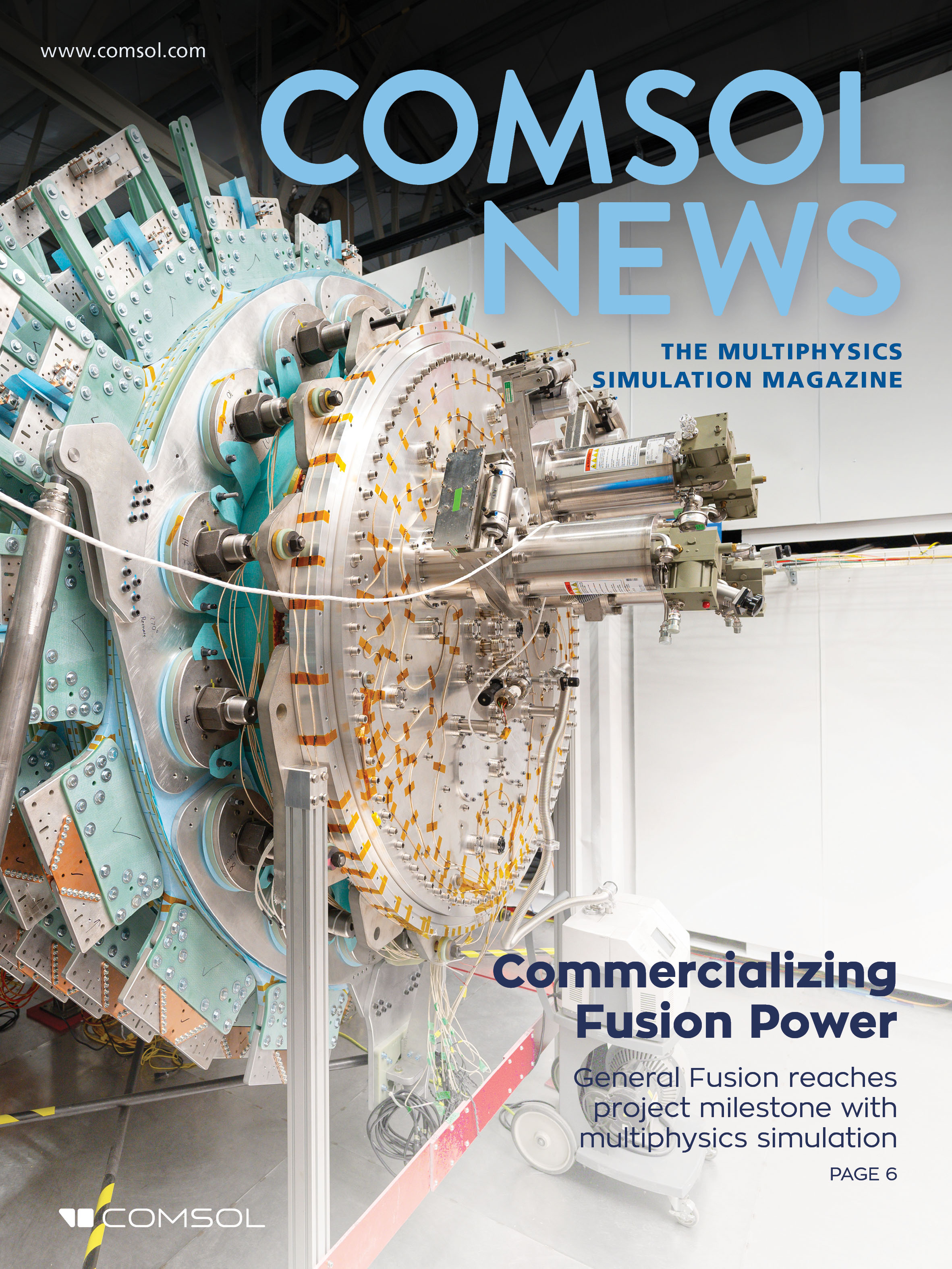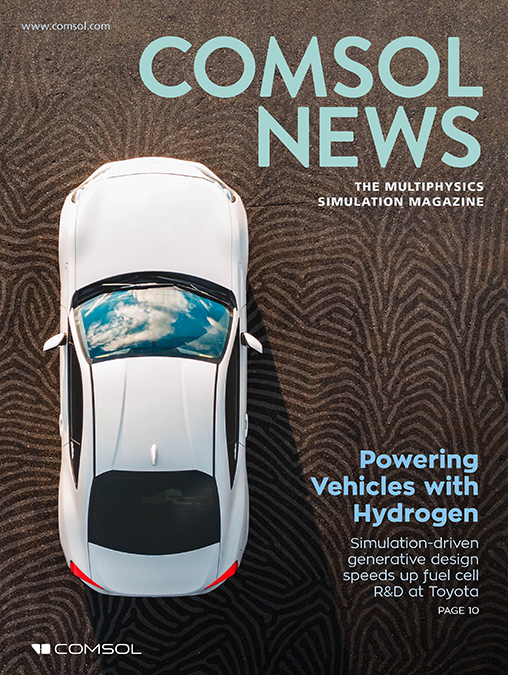- COMSOL News 2025
- COMSOL News Special Edition: Food Industry
- COMSOL News 2023
- COMSOL News 2022
- COMSOL News 2021
The latest stories from COMSOL users are available in COMSOL News and Multiphysics Simulation.
Pinggao Group uses simulation apps and digital twins to design electric power system components. The apps have been downloaded thousands of times throughout the company's engineering teams. Read More
Baker Hughes saves 30% on prototyping costs by using 3D ultrasonic simulations to optimize transducers used for testing extracted oil and gas. Read More
Biopharmaceuticals are expensive to develop due to their complex molecular structure, the specialized manufacturing processes they require, and the regulatory requirements on the industry. Life sciences company, Sartorius, turns to multiphysics simulation for help. Read More
General Fusion has successfully designed and optimized a fusion demonstration machine with the help of multiphysics simulation. The machine is now forming plasmas regularly. Read More
By using simulation apps and machine learning techniques, USM researchers are laying the groundwork for UUVs capable of autonomously and accurately revealing what lies beneath the waves. Read More
IAV developed an approach for combining sodium-ion and solid-state lithium iron phosphate battery technologies to form a less expensive and more ecofriendly system that can handle EVs. Read More
In this Q&A, Michele Colloca of Sonion discusses the main challenges in designing hearing aids and how modeling and simulation helps accelerate R&D. Sonion is a global leader in designing and manufacturing components for hearing instruments and for the professional audio segment. Read More
iBMB, a spin-off of the University of Basilicata, developed a simulation app to help oncologists better monitor and assess solid tumor progression for breast cancer. The app is ready for implementation in a clinical setting. Read More
Wood Thilsted, a leader in offshore engineering, used structural analysis to design boat landings that can withstand the relentless force of the sea and frequent interactions with 200-tonne vessels. Read More
NASA combines thermal modeling and experimental testing to find the best compressor design for the system that keeps the air breathable at the International Space Station. Read More













